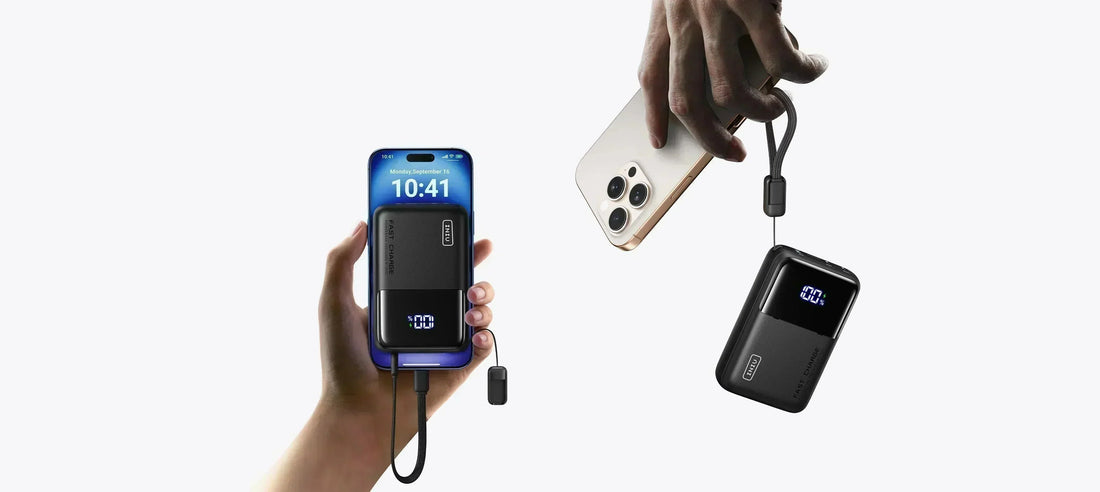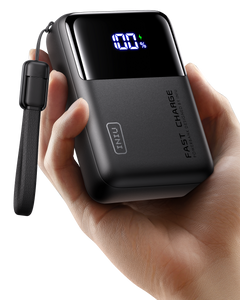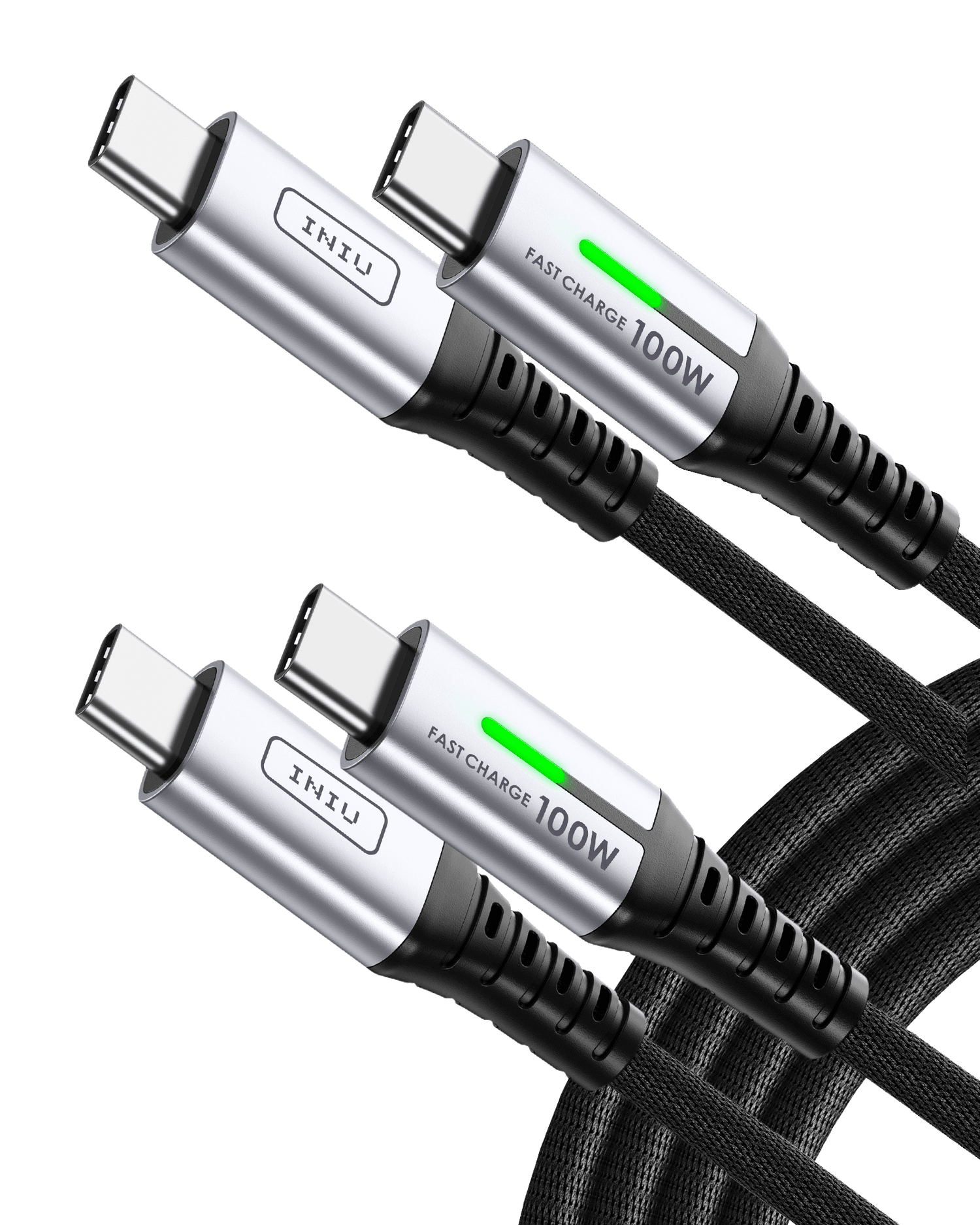
Portable Power Bank Maintenance: Best Practices for Optimal Performance
Like a quiet hero, portable power banks hold the key to a connected life, keeping your devices awake and ready when you’re off the grid. But behind that plastic case and blinking lights, your power bank has a secret: it needs your help to stay strong.
Careless use can turn your trusted sidekick into a powerless brick. So, before you blame your power bank for slowing down, let’s flip the script. What if your charger’s ‘bad day’ is a direct result of how you’ve been treating it? This guide will teach you the smart, simple care steps that make a good power bank last longer and work better—so it stays a loyal part of your tech kit for years to come.
Why Power Bank Care Matters So Much
Your power bank’s health affects how well it charges your devices. Here’s why good care matters :
- Longer lifespan : Regular care helps a good power bank stay useful for more years.
- Better performance : A cared-for power bank charges devices faster and more completely.
- Less chance of failure : Charging problems happen less often when your power bank is in good shape.
- More safety : Good power bank care can stop overheating or short circuits.
- Money-saving : Taking care of a power bank means you don’t need to buy a new one so soon.
Smart Charging Habits for a Well-Functioning Portable Power Bank
Just like how to safely use your notebook computer, a good power bank needs proper charging habits to protect its battery life and performance. The following table shows some simple rules you can follow to keep your power bank working well.
| Good Charging Habit | Why It Helps |
| Charge it before it drops too low | Keeping power bank above 20% stops deep discharges. |
| Unplug when full | Avoids overcharging and overheating. |
| Use the right cable | Cables made for your power bank fit best and reduce heat. |
| Charge at room temperature | Keeps the battery safe from heat or cold damage. |
| Avoid fast charging all the time | Slow charging is gentler on the battery. |
| Charge at least once every 3 months | Keeps battery healthy even when not used often. |
Some more tips that may warrant your attention:
- Keep away from water : Power banks are not waterproof. Store them in dry places.
- Do not use damaged cables : They can cause short circuits or damage your device.
- Check for firmware updates : Some smart power banks offer updates to fix issues.
When you build these habits, you protect your portable power bank. power bank safety practices to ensure long-lasting, reliable performance.
8 Warning Signs Your Power Bank Needs TLC
Even the best power banks need care. Look for these signs to know when yours needs attention:
- Takes longer to charge than before : This often means the battery inside is losing its strength. The chemical parts inside wear out over time, slowing down charging.
- Doesn’t fully charge your device : If it used to charge your phone twice and now only once, it is holding less power than before.
- Feels too hot during use: Heat is a warning sign. It can come from too much power flowing inside or from damaged parts.
- Bulges or changes shape : This can happen if the battery swells inside. It is a serious safety risk. Stop using it right away.
- Randomly shuts off : If your power bank turns off for no reason, the control board or battery may be failing.
- Charges less than before : This can happen when the battery’s life is near the end. It no longer stores as much energy as before.
- Unusual sounds or smells : A faint chemical smell or strange buzzing sound is a bad sign. Stop using it immediately.
- LED lights show wrong levels : If the lights blink or show wrong charge levels, the control board may be faulty.
If you notice any of these problems, give your power bank a break and check if it needs repair or replacement.
8 Clear Signs It's Time to Replace Your Power Bank
Even the best-maintained power banks eventually need replacement. If you're noticing performance issues , check our comprehensive power bank buying guide to make a smart upgrade.
- The power bank charges devices very slowly : If your phone takes much longer to charge than before, the battery inside may be old and weak.
- It holds very little power : When your power bank only gives you half a charge or runs out quickly, it’s a clear sign the battery is worn out.
- The casing is cracked or damaged : Cracks in the case can let dust or moisture get inside. This can cause short circuits and make it unsafe.
- You need more power for new devices : New phones and gadgets often need more power. An old power bank may not keep up with them.
- It overheats even with light use : Overheating, even when charging small devices, can mean the battery or circuits are damaged.
- It makes strange noises or smells : If it buzzes, hisses, or smells funny, it’s time to stop using it.
- Visible leaks or corrosion : Liquid around the ports or greenish corrosion inside means the battery is leaking. This is dangerous.
- The power bank no longer works after a drop : Even if it looks fine outside, a fall can damage inside parts. If it stops working well after a drop, replace it.
If you’re ready to upgrade to a new power bank, the INUI Carry P50-E1 Power Bank 45W Smallest 10,000mAh is a great choice. It packs a powerful punch in a tiny size, supporting PD, QC, and Samsung Super Fast Charging . With up to 45W output , it can even charge a MacBook Air to 42% charge in just 25 minutes. This power bank also features a new detachable lanyard USB-C cable and ultra-mini design , making it perfect for travel or daily use. At just $29.99 , it’s a smart upgrade for those who need a good portable power bank with fast and reliable charging.

FAQs About Power Bank Care and Maintenance
Q1: Can I use my power bank while it’s charging?
Yes , but it’s not recommended. For using a power bank while it’s charging puts extra load on the battery, making the battery heat up and speeding up charge capacity loss over time.
Q2: How should I store my power bank if I don’t use it often?
- Store it in a cool, dry place.
- Avoid extreme temperatures, like hot cars or freezing areas.
- Also, charge it to about 50% before storage.
Q3: Can a power bank’s capacity change over time?
Yes , a power bank’s battery slowly loses capacity with use, which is normal for all rechargeable batteries.
Q4: Is it safe to leave a power bank plugged in overnight?
It’s not the best idea. Though most power banks have built-in protection, leaving them plugged in for too long can still stress the battery.
Q5: What’s the best way to clean my power bank?
- Use a dry, soft cloth to wipe the outside. If there’s dirt around the ports, use a soft brush or a can of compressed air.
- Do not use water, cleaning sprays, or harsh chemicals.
- Keep it dry and clean to avoid damage.
Q6: Does dropping a power bank damage it?
Yes , dropping can damage the internal battery or the outer casing. Even if it looks fine on the outside, the inside might have cracks or loose parts.
Q7: Can power banks charge devices other than phones?
Yes . Many power banks can charge tablets, cameras, wireless earbuds, and even some laptops, as long as the output matches the device’s input.
Q8: Should I drain my power bank before charging?
No . Draining it fully can damage the battery inside. Power banks use lithium-ion batteries, and according to this comprehensive guide on lithium battery care , they perform best when kept between 20% and 80% charge. Letting it run to 0% repeatedly can significantly reduce battery lifespan. Charge it before it drops too low to protect the battery.
Q9: Should I charge my power bank to 100%?
Yes, but not all the time. It’s fine to fully charge it now and then, but try not to do this every time. Stopping at around 80-90% is easier on the battery. Full charges are useful when you need maximum power for a trip. For daily use, keeping it below full can help the battery last longer.
Q10: What weakens a power bank?
Several things can weaken a power bank’s battery:
- Extreme heat or cold . Leaving it in a hot car or in freezing places can damage the battery.
- Deep discharges. Running it down to 0% too often weakens the battery.
- Overcharging. Keeping it plugged in long after it’s full can hurt the battery.
- Using wrong or poor-quality cables. These can cause slow charging or damage the battery.
- Heavy use with high-power devices. Constantly charging power-hungry devices can stress the battery and shorten its life.
Q11: Is it normal for a power bank to heat?
Yes , it’s normal for a power bank to get a little warm when charging or discharging. This happens because of energy moving through the battery and circuits. But, it should not get too hot. If it feels very hot to the touch, stops charging, or smells bad, stop using it right away.




